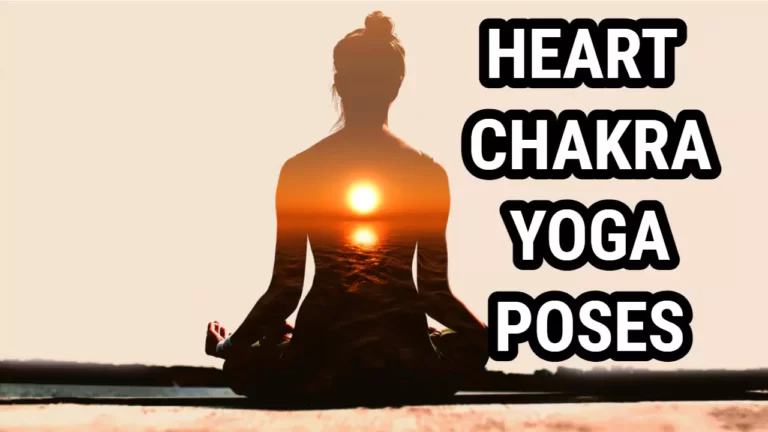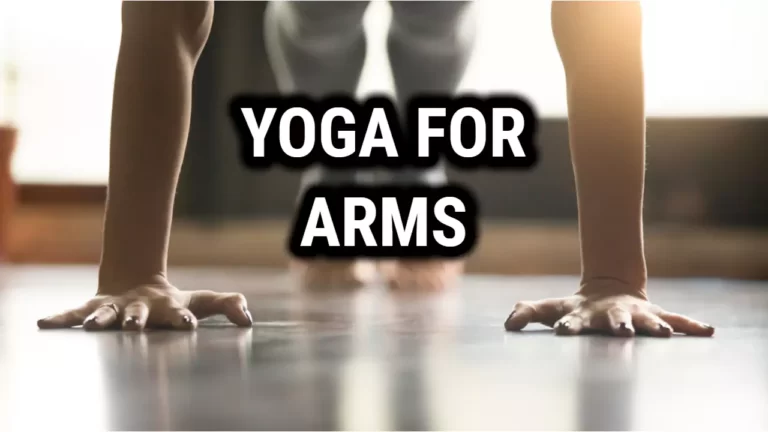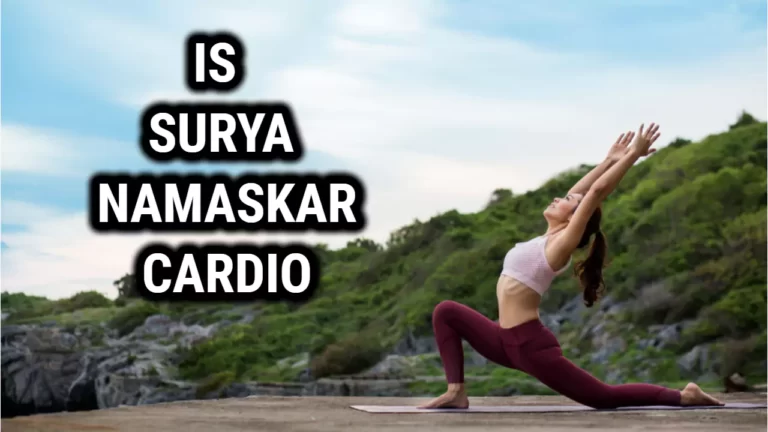What is Ashtanga Yoga – A Way To Transform Your Life

Ashtanga Yoga as the name says Ashta means eight and Anga means limbs in Sanskrit. Ashtanga yoga means eight limbs of yoga
What are the Eight Limbs Of Ashtanga Yoga?
The eight limbs of yoga, outlined in Patanjali’s Yoga Sutras, are:
1. Yama (moral codes)
2. Niyama (self-observances)
3. Asana (yoga postures)
4. Pranayama (breath control)
5. Pratyahara (withdrawal of senses)
6. Dharana (concentration)
7. Dhyana (meditation)
8. Samadhi (enlightenment)
Yama is the first of the eight limbs of Ashtanga Yoga, as outlined in the Yoga Sutras of Patanjali. Yama includes five ethical restraints that yogis should strive to practice on a daily basis. These five restraints are: Ahimsa (non-violence), Satya (truthfulness), Asteya (non-stealing), Brahmacharya (celibacy), and Aparigraha (non-hoarding).
Niyama in ashtanga yoga
- Sauca: Purity or cleanliness of body and mind.
- Santosa: Contentment with one’s life and situation.
- Tapas: Discipline or austerity of body and mind.
- Svadhyaya: Study of scriptures and one’s self.
- Isvara Pranidhana: Surrender to the higher power.
Asana is the physical aspect of Ashtanga yoga which involves various yoga postures and movements.
Pranayama are the breathing techniques used to control the breath and cultivate vital life energy.
Pratyahara refers to the process of withdrawing the senses from external objects.
Dharana is the practice of focusing the attention on a single object or thought.
Dhyana is the practice of meditation, which involves inward reflection and concentration on the Self.
Lastly, Samadhi is the experience of spiritual liberation and inner union with the divine.
The practice of Ashtanga yoga helps to promote physical and mental well-being. It helps practitioners to become more aware of their body and mind, and to cultivate a sense of peace and calm. Through regular practice, practitioners can cultivate balance and harmony in their lives and experience the divine within.
History Of Ashtanga Yoga Practice
The history of ashtanga yoga is both fascinating and illuminating. From its ancient roots to its modern-day practice, this type of yoga has been a source of physical, mental and spiritual transformation for countless practitioners. The original ashtanga system included six sequences of postures designed to gradually increase strength, flexibility and balance over time.
Today, ashtanga yoga remains one of the most popular forms of vinyasa flow (or dynamic) yoga practiced around the world. It is characterized by its emphasis on breathing techniques and sun salutations, which are used to transition between postures.
Through regular practice, students learn how to link their breath with their movements while cultivating awareness and concentration of the body and mind. Despite its many benefits, it should be noted that ashtanga yoga is an advanced form of practice that requires dedication and perseverance to master correctly and safely.
Difference Between Vinyasa And Ashtanga Yoga?

Although vinyasa and ashtanga yoga are both forms of dynamic yoga practice, there are some key differences between them. The primary series of ashtanga yoga is a set sequence consisting of postures that should be practiced in the same order each time.
In contrast, vinyasa yoga is more open-ended and can be tailored to meet the individual needs of each student. Ashtanga practice also includes a focus on breathwork and mental concentration, while in vinyasa classes, the focus tends to be more on physical alignment and sequencing.
Benefits Of Ashtanga Yoga
1. Improves Flexibility: Ashtanga yoga focuses on a specific set of poses and postures. This repetition helps improve your flexibility.
2. Strengthens Muscles: Ashtanga yoga requires you to hold each pose for a few breaths, which helps build strength in the muscles.
3. Improves Balance: Ashtanga yoga requires a lot of balance, which helps improve your overall balance.
4. Enhances Concentration: Ashtanga yoga requires you to focus on the breath and the poses. This helps improve your concentration and focus.
5. Improves Cardiovascular Health: Ashtanga yoga involves moving through poses quickly, which gets your heart rate up. This helps improve your cardiovascular health.
6. Reduces Stress: Ashtanga yoga helps you to be in the moment and focus on the present. This helps reduce stress and anxiety.
Physically Demanding Style Of Yoga

A commonly cited statistic is that the physical demands of Ashtanga Yoga are comparable to a six-mile run. This emphasizes the intensity of this style of yoga, which follows a set sequence of postures and transitions that are linked together by breath.
The asana practice is one part of the eight-limb ‘Yoga Sutras’ system developed by Patanjali, which also includes ethical guidelines, self-discipline, and meditation.
When approaching the physically demanding style of Ashtanga Vinyasa Yoga, it’s important to remember not to push yourself too hard or beyond your limits. It can be helpful to begin with modified poses, move at a slower pace than one usually would in a more vigorous class setting, and take frequent breaks throughout practice. With time and patience, we can discover our own strength and resilience within this powerful form of yoga.
Transitioning into the next section about power yoga vs ashtanga yoga, it’s essential to understand the commonalities between each practice as well as their subtle differences.
Power Yoga Vs Ashtanga Yoga
It’s important to recognize the similarities between Power Yoga and Ashtanga Yoga before exploring the differences. Both practices are rooted in the eight limbs of yoga, which include ethical guidelines and meditation. Additionally, both practices emphasize a deep connection between breath and movement, allowing practitioners to move through poses as one continuous flow or vinyasa.
Though there are some commonalities between these two powerful forms of yoga, there are also subtle distinctions. For instance, Power Yoga is more accessible than Ashtanga Yoga and focuses on an individual’s personal practice rather than following a strict sequence of postures.
This type of practice allows more freedom for exploration and creativity while still maintaining mindful transitions between poses. In contrast, Ashtanga Yoga follows a set sequence of postures that become increasingly challenging over time as students progress in their practice.
With an understanding of the similarities and differences between Power Yoga and Ashtanga Yoga, it’s time to explore how to get the most out of your yoga practice no matter which style you choose.
Tips On How To Get The Most Out Of Your Practice

Now, it’s time to get the most out of your practice and unlock the full potential of yoga. As a registered yoga teacher, I have some great tips for both Power Yoga and Ashtanga Yoga practitioners to get the most out of their practice. Here are three key steps you can take to make sure your practice is both rewarding and effective:
• Make sure you learn proper form: Whether you’re practicing Power Yoga or Ashtanga Yoga, it’s important to learn the basic postures correctly in order to avoid injury and maximize benefit. If you’re new to either practice, consider taking a few classes with a registered yoga teacher who can guide you in proper alignment.
• Understand the sequence: Once you’ve got the basics down, start exploring the primary series of poses that make up each type of yoga. In Power Yoga, there’s more freedom to experiment with different sequences and flows; however, if you’re practicing Ashtanga Yoga, it’s important to follow the traditional sequence as closely as possible. Take five full breaths in each posture before transitioning into the next one.
• Focus on breath: The importance of breath cannot be overstated when it comes to any type of yoga practice. Make sure to focus on your breath throughout your practice—it will help keep you present and mindful while also providing a calming effect that will allow for deeper stretches.
By following these simple steps, anyone can get started on their journey into the powerful world of yoga—no matter which style they choose!
Do Read: Kriya Yoga Benefits: The Secret to Physical, Mental, and Spiritual Well-Being
Understanding The Postures And Sequences of Ashtaga Yoga
Ashtanga yoga is a type of yoga that is based on the traditional Indian system of yoga. It is a form of Vinyasa yoga, which means it follows a specific sequence of postures. The postures of Ashtanga yoga are designed to create a strong, internal heat, which detoxifies the body and allows for a deeper practice.
The sequence includes sun salutations, standing poses, seated poses, backbends, and inversions. It is important to understand the postures and sequences of Ashtanga yoga, so that you can practice it safely and effectively.
Sun Salutations:
The sun salutations are a series of poses that are designed to warm up the body and prepare it for the more challenging poses that come in the rest of the sequence. The sun salutations involve stretching, strengthening, and twisting, and are usually performed in a slow, controlled manner.
Standing Poses:
The standing poses of Ashtanga yoga are designed to build strength and balance. They involve standing postures such as warrior one, warrior two, triangle, and half-moon. These poses are usually held for a few breaths, and then repeated on the opposite side.
Seated Poses:
The seated poses of Ashtanga yoga are designed to stretch and lengthen the muscles. These poses include seated forward bends, twists, and hip openers. They are usually held for a few breaths, and then repeated on the opposite side.
Backbends:
The backbends of Ashtanga yoga are designed to open the chest, shoulders, and upper back. They involve poses such as cobra, upward facing dog, and wheel pose. These poses are usually held for a few breaths, and then repeated on the opposite side.
Inversions:
The inversions of Ashtanga yoga are designed to increase strength and flexibility. They involve poses such as headstand, shoulder stand, and handstand. These poses are usually held for a few breaths, and then repeated on the opposite side.
The postures and sequences of Ashtanga yoga can be challenging, but with practice, you can learn to move through the poses with grace and ease. By understanding the postures and sequences of Ashtanga yoga, you can practice safely and effectively, and reap the many benefits of this ancient form of yoga.
Also Read: What Are The Yoga Sutras For Rapid Weight Loss?
Frequently Asked Questions
How Often Should I Practice Ashtanga Yoga?
Practicing Ashtanga Yoga requires dedication and consistency. For example, one practitioner, Mary, has been practicing for 18 months. Mary found that the key to success in her practice was committing to a regular schedule of at least three times a week. She also finds that taking breaks when needed helps her stay motivated and enjoy the practice more.
The frequency of Ashtanga Yoga practice depends on the individual’s goals and lifestyle. For instance, some people may find they can progress quickly with daily practice while others may prefer to work up gradually to five or six days of practice per week.
Is Ashtanga Yoga Suitable For Beginners?
Is Ashtanga Yoga suitable for beginners? This is a question that many people have when they are considering taking up this form of yoga. The answer is yes, Ashtanga Yoga can be quite accessible to beginners.
The practice of Ashtanga Yoga consists of a series of postures and breathing exercises that are designed to move a person through their physical and mental limitations. It is a powerful form of yoga that can help to improve flexibility, strength, and coordination.
The practice is also suitable for those who may not be in perfect physical condition due to age or health concerns. With modifications, the poses can be made easier for those with physical limitations, making it possible for them to still reap the benefits from practicing Ashtanga Yoga.
It’s important to note that even though it may be more challenging than other forms of yoga, anyone can benefit from its practice regardless of experience level or physical state.
What Do I Need To Wear For An Ashtanga Yoga Class?
When practicing Ashtanga Yoga, wearing the right clothing is essential for comfort and ease of movement. It’s best to wear fitted yet stretchy clothes; shorts or leggings and a t-shirt or tank top work well.
Avoid wearing anything too restrictive like jeans or a dress as these can be uncomfortable when stretching and moving around. Additionally, having an extra layer like a light cover up or cardigan is useful for cooling down during relaxation at the end of the class.
Are There Any Potential Risks Associated With Ashtanga Yoga?
Firstly, practitioners need to be mindful that they are not pushing themselves too hard. Ashtanga yoga can be demanding, so it’s essential not to overstretch or strain muscles while practicing poses.
In order to mitigate risks, there are a few steps that can be taken:
- Warm up properly: It is important for practitioners to warm up their muscles before beginning a session by stretching gently and gradually increasing intensity as the body becomes more accustomed.
- Follow instructions carefully: Following instructions provided by an experienced teacher is key in avoiding injury or overexertion.
- Don’t skip alignment cues: Alignment cues are integral in ensuring postures are done correctly and safely; these should never be ignored when practicing Ashtanga yoga.
By taking precautionary measures and listening closely to their own bodies, practitioners can increase their chances of experiencing the numerous benefits offered by this practice without putting themselves at risk of injury.
Is It Necessary To Have An Experienced Teacher To Practice Ashtanga Yoga?
Like a ship navigating through turbulent waters, seeking the right teacher is essential for those beginning their Ashtanga Yoga journey. With an experienced instructor guiding the way, practitioners can get the most out of their practice and reap its full benefits.
Having someone familiar with the intricate poses, breathing techniques and vinyasas of this form of yoga is paramount for ensuring safe execution. A good teacher will have knowledge of proper alignment, which can help prevent injury and ensure correct postures are being held throughout the practice.
Teachers can provide personalized instruction tailored to each student’s individual needs. This type of guidance is especially beneficial for those new to Ashtanga Yoga as they learn how to integrate body awareness with breath control.
In summary, having an experienced teacher when practicing Ashtanga Yoga is highly recommended if one wants to receive all the physical and mental benefits that come along with it. An instructor will be able to ensure correct technique and provide guidance as students become increasingly more familiar with this style of yoga.
Related Read: What Are Some Beginner Yoga Postures To Lose Weight?
Conclusion
Ashtanga yoga is a powerful and transformative practice that has been around for centuries. With its combination of breath, movement, and intention, it can help to improve physical and mental wellbeing.
It’s a great practice for those looking to develop strength, endurance, and flexibility, as well as for those who want to cultivate a sense of calmness and presence. Whether you’re an experienced yogi or a newcomer, Ashtanga yoga has something to offer. With its unique combination of physical and mental benefits, it’s an ideal practice to explore.





